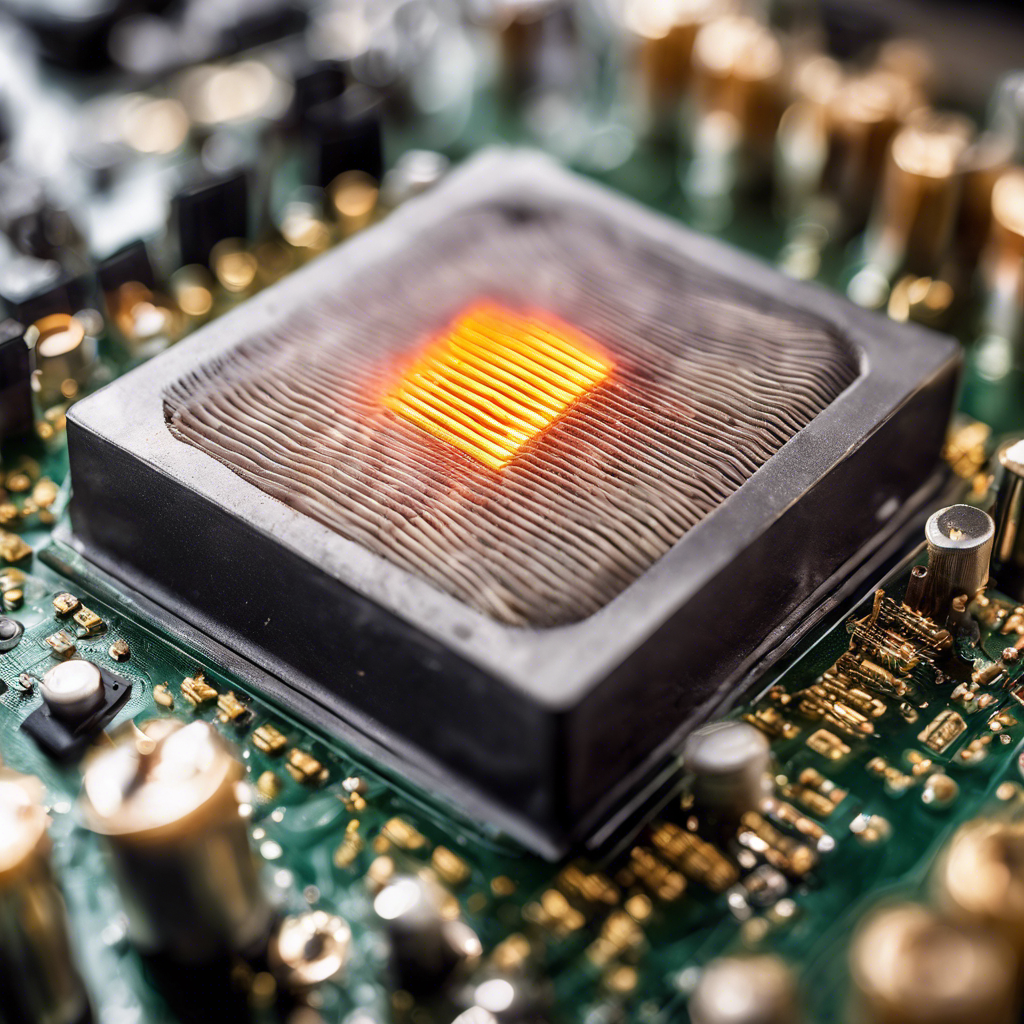A Breakthrough in Heat Management: The Rise of Thermal Transistors

Researchers at the University of California, Los Angeles have developed a groundbreaking thermal transistor that could revolutionize heat control in electronics and beyond.
From data centers to smartphones, excess heat has been a persistent problem in the world of electronics. Not only does it consume a significant amount of energy, but it also hampers the performance and longevity of devices. However, a team of physicists and engineers at the University of California, Los Angeles may have found a solution. They have developed a new type of transistor, known as a thermal transistor, which can precisely control heat flow by leveraging atomic bonding at the single-molecule level. This breakthrough invention could have far-reaching implications for various industries, including electronics, energy systems, and even medical treatments.
The Challenge of Heat Management:
Controlling heat flow has long been a challenge for physicists and engineers. As electronic devices continue to shrink in size and increase in power, the heat generated by these devices becomes more concentrated, leading to hotspots that can affect performance and reliability. In fact, more than half of the electricity consumed by data centers in the United States is used for cooling purposes. Traditional cooling methods are not only energy-intensive but also limit the potential of emerging technologies such as 3-D-stacked chips and renewable energy systems.
The Birth of Thermal Transistors:
The concept of thermal transistors, which can control heat flow as precisely as electrical transistors control electrical currents, has intrigued researchers for decades. However, previous attempts were hindered by challenges such as unwieldy moving parts and structural limitations. The team at the University of California, Los Angeles took a different approach by focusing on the atomic-level bonding within the transistor. By manipulating the distribution of electrons between bonded atoms using a nanoscale electrode, they were able to control thermal conductivity and achieve precise heat movement.
Unleashing the Potential:
The new thermal transistor has already demonstrated remarkable performance in experiments. It outperformed other thermal transistors by several orders of magnitude, achieving excellent cooling speeds and dampening heat spikes by an astonishing 1,300 percent. This breakthrough paves the way for capturing and reusing wasted heat, which could potentially lead to more energy-efficient electronic devices. Furthermore, the precise control of heat offered by thermal transistors opens up new possibilities in various applications, including preventing overheating in computers and advancing hyperthermia therapy for cancer treatment.
Integration and Future Research:
While the potential of thermal transistors is immense, more research is needed before they can be fully integrated into existing electronic systems. The development of hybrid electronic-thermal circuitry, which combines the new heat-controlling circuitry with traditional electrical components, is crucial for realizing the full potential of thermal transistors. Researchers are also exploring ways to further improve the performance of the device and integrate it into complex systems such as 3-D-stacked chips.
Conclusion:
The invention of thermal transistors represents a significant breakthrough in heat management and opens up a world of possibilities. With precise control over heat flow, these transistors can not only prevent damage to electronic devices but also harness wasted heat for reuse. The potential applications range from improving the performance and longevity of electronic systems to advancing medical treatments such as hyperthermia therapy. While there is still work to be done before thermal transistors can change the world, their development marks a major step towards elegantly coupling electronics with thermal energy flow and shaping the future of heat management.

